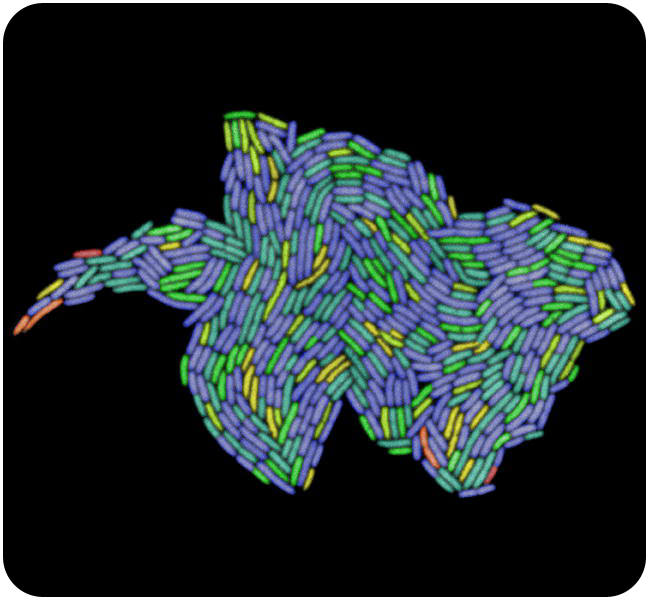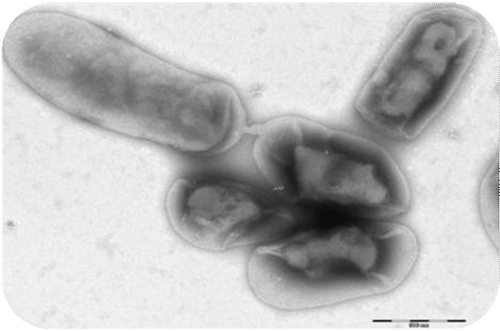5.4: Reproducción de bacterias
- Page ID
- 108593

¿Cómo pueden las bacterias reproducirse tan rápidamente?
Las bacterias pueden dividirse muy rápidamente. Esta imagen es de una colonia creciente de bacterias E. coli. En el ambiente adecuado, una sola E. coli puede dividirse para formar una colonia de cientos de bacterias en tan solo unas horas.
Reproducción de bacterias
Las bacterias, al ser organismos procariotas unicelulares, no tienen versión masculina o femenina. Las bacterias se reproducen asexualmente. En la reproducción asexual, el “padre” produce una copia genéticamente idéntica de sí mismo.
Fsión binaria
Las bacterias se reproducen mediante un proceso llamado fisión binaria. Durante la fisión binaria, el cromosoma se copia a sí mismo, formando dos copias genéticamente idénticas. Entonces, la celda se agranda y se divide en dos nuevas celdas hijas. Las dos celdas hijas son idénticas a la celda padre. La fisión binaria puede ocurrir muy rápidamente. ¡Algunas especies de bacterias pueden duplicar su población en menos de diez minutos! Este proceso hace posible que una tremenda colonia bacteriana comience a partir de una sola célula.
Intercambio de ADN
¿Hay bacterias masculinas y femeninas? Por supuesto la respuesta es no. Entonces, la reproducción sexual no ocurre en las bacterias. Pero no todas las bacterias nuevas son clones. Esto se debe a que las bacterias pueden adquirir nuevo ADN. Este proceso ocurre de tres maneras diferentes:
- Conjugación: En conjugación, el ADN pasa a través de una extensión en la superficie de una bacteria y viaja a otra bacteria (Figura a continuación). Las bacterias esenciales intercambian ADN vía conjugación.
- Transformación: En transformación, las bacterias recogen trozos de ADN de su entorno.
- Transducción: En la transducción, los virus que infectan bacterias transportan ADN de una bacteria a otra.

Resumen
- Las bacterias se reproducen por fisión binaria, dando como resultado dos células hijas idénticas a la célula madre.
- Las bacterias pueden intercambiar ADN a través de los procesos de conjugación, transformación o transducción.
Explora más
Utilice el siguiente recurso para responder a las preguntas que siguen.
- Reproducción asexual en http://www.youtube.com/watch?v=DY9DNWcqxI4 (1:03)
- Hay aproximadamente 7 mil millones de humanos en el planeta. ¿Cuánto tiempo tardarían algunas bacterias en hacer 7 mil millones de copias de sí mismas?
Revisar
- Describir cómo se reproducen las bacterias?
- ¿Cómo intercambian ADN las bacterias?
- ¿Qué es la fisión binaria?
- ¿Qué es la transformación que involucra bacterias?

